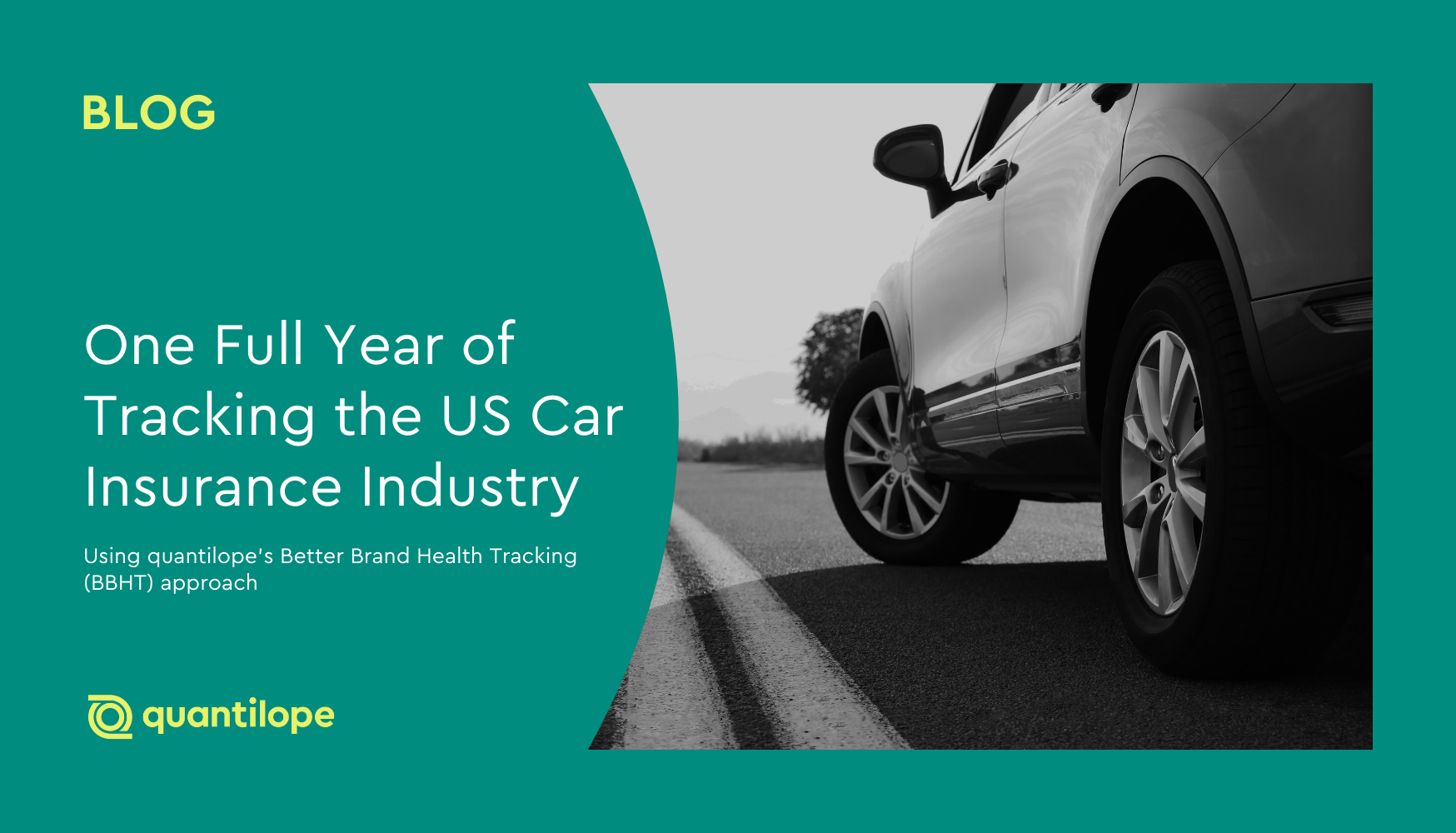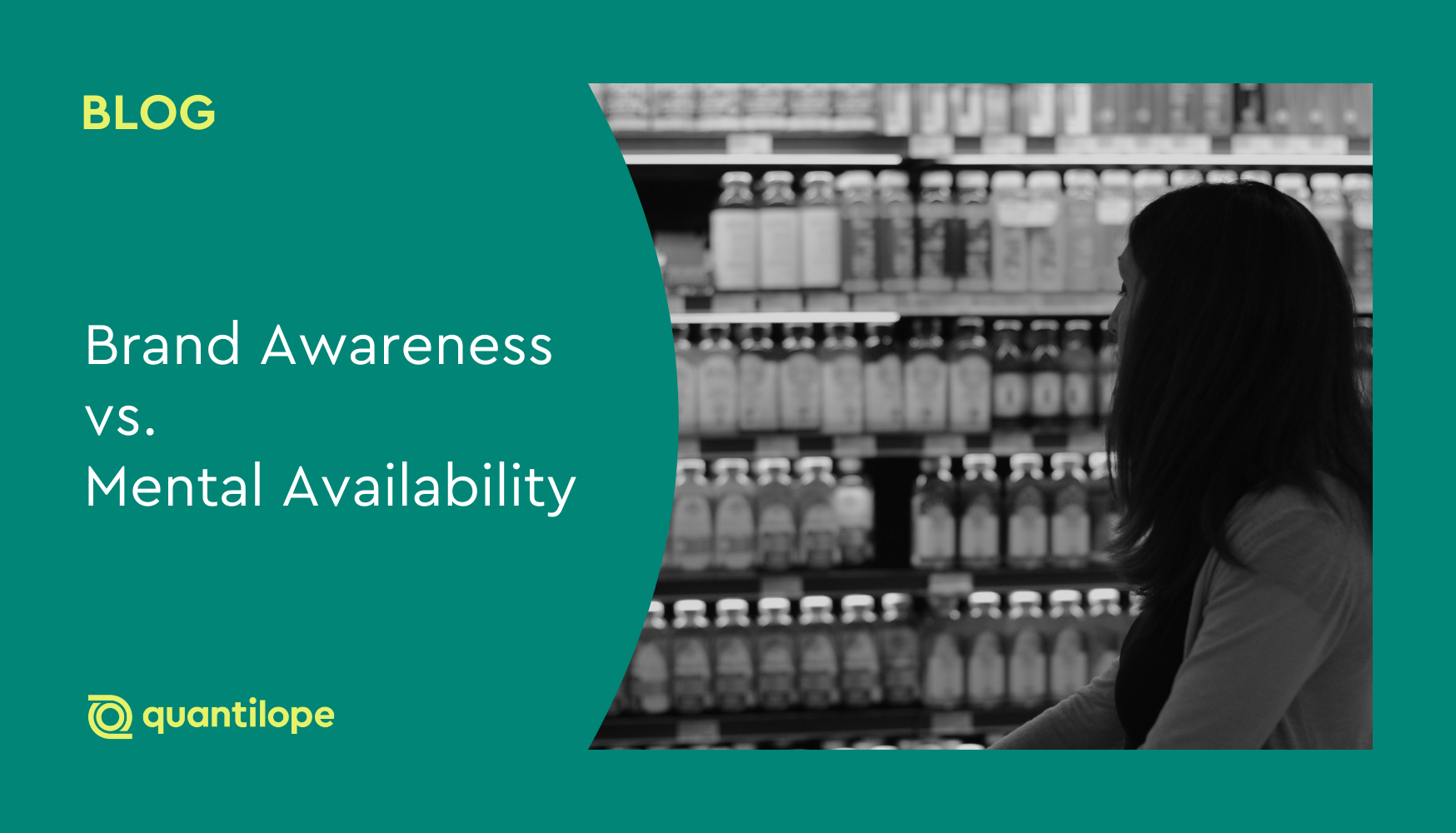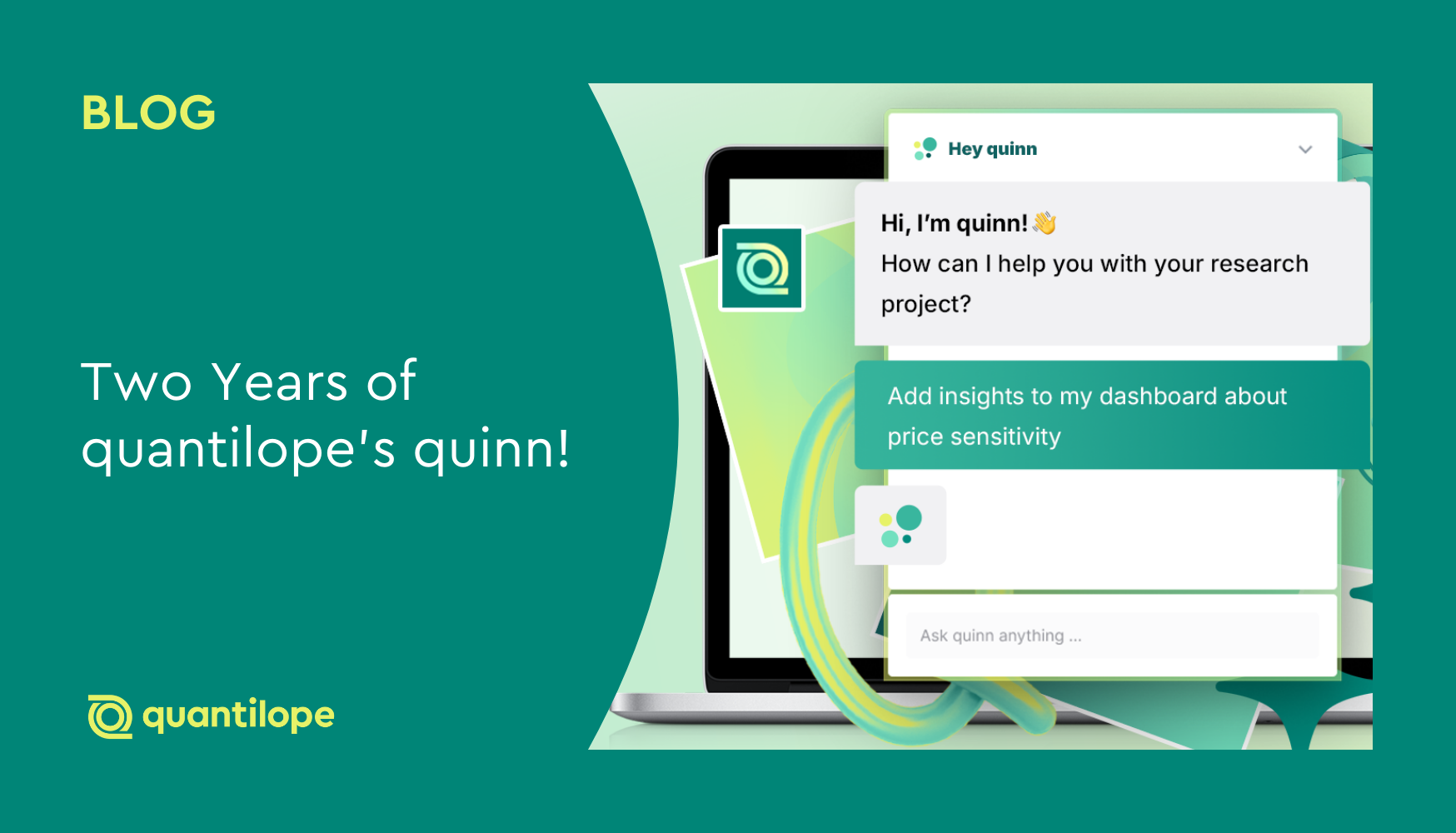quantilope's Auto Insurance Better Brand Health Tracking study has now been running for one full year, and this blog highlights some of the major findings we've uncovered over the course of tracking.
The Better Brand Health Tracking approach
Originating from the work of Professor Jenni Romaniuk at the Ehrenberg-Bass Institute for Marketing Science, Better Brand Health Tracking (BBHT) is a modernized and highly actionable way to track brand metrics over time. Rather than focusing on traditional tracking metrics such as brand awareness, consideration, and usage, BBHT incorporates unique elements known as Category Entry Points, Mental Availability, and Mental Advantage analysis; these components of BBHT help brands understand what brings consumers to shop in their category, which brands they think of and consider when they get there, and which brands perform better or worse than expected (respectively).
quantilope's US Auto Insurance BBHT narrows in on Progressive as the chosen focal brand (BBHT studies are designed for the category, analyzed for the buyer, and reported on for the brand). After 3 waves and responses from over 1500 US car owners between the ages of 18-69, below are some of the major findings.
Progressive has stable brand health, but competitive pressure is increasing
Between this summer and last (Summer of '24 to '25), Progressive reports stable brand metrics and consistently ranks among the 'big 4' providers in the auto insurance category for Mental Availability metrics, alongside Allstate, State Farm, and GEICO. Notably, Progressive's Mental Market Share (one of four key Mental Availability metrics) is right on par with actual market share for the brand (around 15%).
Despite strong and stable metrics, Progressive is vulnerable to rising competitive pressure from brands like Allstate and Travelers, both of which show rising Share of Mind (SoM - another key Mental Availability metric) among Progressive customers year-over-year; this means a rising number of Progressive customers are starting to think more about other insurance providers, leaving Progressive to 'battle' a bit harder for space in consumers' minds. Among Progressive's current non-customers, State Farm has the highest SoM - meaning Progressive will have to increase their mental presence in potential customers' minds (and deter them from State Farm) in order to grow.
Non-customers present the biggest opportunity for Progressive's brand growth
As mentioned above, current non-customers are a key audience for growth. For Progressive, this means making sure their marketing and branding efforts reach this audience and form a powerful mental connection (these connections are CEPs - like 'to protect myself against liability claims'). While Progressive's brand awareness is very strong (91% aided awareness as of Summer '25), if they can't form these crucial connections in the minds of auto insurance shoppers, they won't convert these consumers into customers.
For more auto insurance category findings, and to learn more about quantilope's BBHT approach, access the complete dashboard below!





